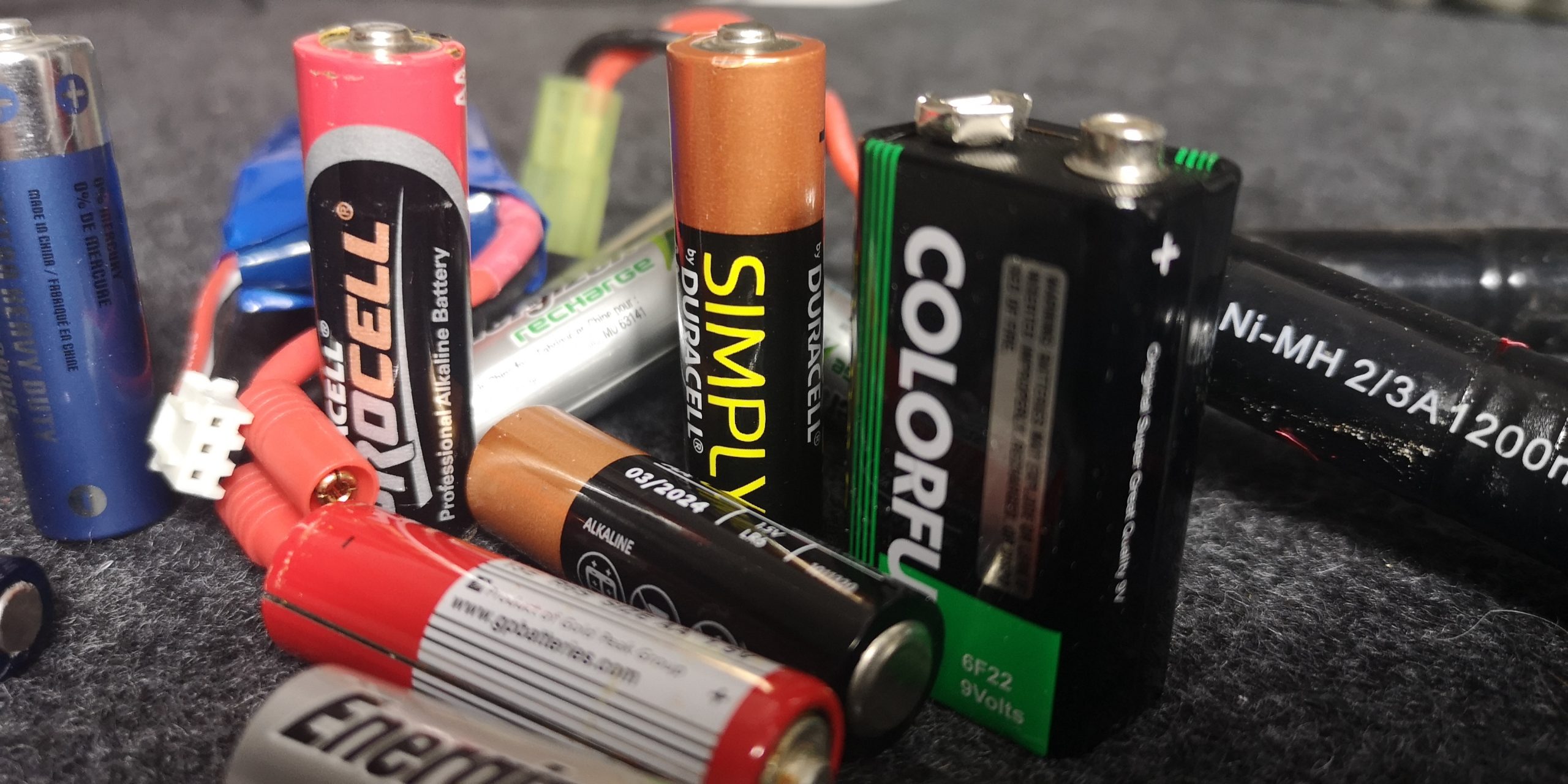
One of the biggest technological challenges will be the need to provide a new, more efficient and less harmful source of energy storage. This applies to both small electronic devices and the automotive industry, which is making a sharp turn towards electricity. Another area where there is a need for large-scale energy storage is the production of energy from solar panels.
As we have known for a long time – deposits of fossil elements such as lithium will soon be depleted – which forces us to look for alternative forms of energy storage
A new generation of mobile devices will require more battery resources, but the most advanced batteries on the market are still the least expensive. With mobile devices moving to the cloud, many of the same problems that have plagued smartphones also apply. The biggest challenge to new smartphones is battery life. It should be no surprise that mobile devices run a bit more battery intensive than desktop computers—they rely on fast processors and more RAM, along with a smaller screen.
To make matters worse, the batteries that keep these tablets, tablets and phones running are expensive. But the big question on many people’s minds is which batteries are the cheapest, or most energy-efficient. It comes down to a debate over what constitutes a high-power battery—that is, how much power is needed to run these devices at their peak performance.
Energy efficiency of batteries and energy storage is just one of the problems with which we will have to change in the coming years. Another denomination is the depletion of raw materials necessary for the production of batteries such as Nickel, Lithium or Cobalt.
Will we be sourcing raw materials for battery production from space in the future?
It turns out that there is not really a clear cut answer, says Andrew Schmitt, a professor of energy storage engineering at the National Renewable Energy Laboratory in Boulder:
“There are three possible way to achieve success in this area”
Scientists and engineers around the world are considering a new source of energy storage
Fight for lithium
Lithium is now indispensable for the production of batteries for electronics – laptops and smartphones, but also electric vehicles. That is why it is called “new oil”
What has happened to lithium over the past few decades? First, it became cheap. Then came the crash of 2008-2009, which resulted in a collapse in the price of lithium batteries. It is worth noting that during the crisis this price plummeted as low as $8 per kilogram in 2008; it is now more than $20 per kilogram.
Now, lithium is experiencing a crisis because of a fundamental error in the lithium manufacturing process. In the past 20 years, there has been very little innovation in the manufacture of lithium batteries. In many countries, the only alternative for developing the lithium industry is to develop nuclear energy. To do this, all major manufacturers have had to invest huge sums of money in nuclear power plants and the related maintenance work. The cost of nuclear power has risen massively, as a result of the huge investment.
But lithium batteries are made from the same lithium that is used in nuclear reactors and is therefore of much higher quality than nuclear reactors. As a result, the quality and reliability of the lithium batteries that we use today is extremely high.
However, the lithium industry is now facing major challenges. The main one is that the lithium industry is in a crisis because of the price decline in the lithium industry. The lithium battery price has been falling rapidly but the price of lithium batteries has not.
The fact that the lithium industry faces a major crisis is caused by a fundamental error in the battery manufacturing process. This is a fundamental error due to a fundamental defect in the design: namely, the production of lithium from a source known as graphite rather than alumina.
Graphite is a very expensive form of metal. It is a very dense metal. The main problem is that the metal used to make graphite is called alumina, but alumina is used in all lithium batteries. The lithium industry has been developing lithium batteries from alumina for more than 50 years. In the course of the history of batteries, the amount of alumina in a lithium battery has doubled fivefold, and in the case of lithium from graphite doubled six fold. For this to happen, all major manufacturers have been using alumina as a source of lithium.
This error is the result of a fundamental defect in the design of the battery manufacturing process, and it is rooted in the most basic, essential principle of any manufacturing process: namely, the avoidance of waste. Lithium is a precious metal, and its use in the battery industry is very limited, so every gram of it that is not needed for the production of batteries is wasted. This is a basic principle of industrial production: waste of lithium is not allowed.
What the lithium industry cannot do without is the production of lithium from alumina. The only solution to the problem lies in the development of non-graphite electrodes, which can be made from other materials rather than alumina. And since this is not possible until more than half the lithium that is needed in a battery is already produced, the lithium industry is facing a crisis that is not going to improve over the next 20-30 years.
What about the environmental impact of lithium battery production?
We know this problem because for a long time, in 2008, the US Department of Energy (DOE) reported that it would take about 500-600 kilowatt hours of electricity to produce a 10-megawatt battery. But this is already very low compared with the energy demands for other industries that are far more energy-intensive. It is possible for a 10-MW battery to produce up to 1.5 million kWh (more than a third). So, if there is a 10-MW lithium battery, it would need about 600-800 gigawatt hour (Gwe) to produce and store enough energy to cover all electricity use in the country of the United States.
What about the energy-efficiency of lithium battery production?
It is worth mentioning here that lithium production has been increasing at roughly the same rate since about 2007. For example, for batteries for the electric mobility sector, there has actually been a decrease in the amount of batteries in production. This has led many to suggest that lithium batteries might be in a good position to replace fossil fuels.
Today, China dominates the production of lithium. It is true that as a country it is not the largest producer, but Chinese companies have shares in companies of the largest producers.
3 possible scenarios to solve battery problem in the future
Scenario 1. We find replacement for lithium and continue to use batteries in similar form
When lithium and nickel deposits are depleted or their mining becomes very expensive, producers will be forced to look for another reactive element to replace lithium.
Of course, there are, for example, radioactive elements, but mini nuclear reactors in every home or car are science fiction.
Science knows many alternative forms of energy storage, e.g. hydrogen
However, mass application is possible only when:
- the resources required to build it will be relatively easy to obtain and there will be plenty of it
- it will be safe – both in normal use and in case of emergency (fire, earthquake, mechanic damage)
- it will be permanent or easily replaceable
- utilization of used energy storage will not be dangerous to the environment
These above-mentioned problems inhibit our use of both nuclear and hydrogen at home / everyday use applications.
For this reason, our best choice that we still use are relatively safe lithium-ion batteries (li-ion) in telephones, cars and scooters.
The new battery chemistry is made to take this into consideration and to avoid some of its disadvantages. Older NiCd’s batteries are designed to last between 100 to 200 charging cycles in a typical smartphone, compared to about 300 batteries in nickel cells. This means, while they might have more lifespan than the typical nickel cell used in phones, they would still be less reliable over time than nickel cells.
Even Older cells types, e.g. acid cells known from car batteries, are still in use, but their use is not possible everywhere. for example, an electric car based on an acid battery – it would not be able to drive for a long time – its energy efficiency is too low in relation to the weight of the batteries themselves.
The other type of batteries invented after like Nickel – metal hydride (Ni-Mh) that replaced Nickel–cadmium battery Ni-Cd cells still had some drawbacks, such as the memory effect, and would not be suitable for applications where frequent recharging of the cell was required.
Devices such as drones for photography or other flying models would not run on old batteries.
The market for these devices only flourished after the introduction of high-energy efficient lithium and lithium-ion batteries.
Scenario 2. We stop using electric batteries and find another form of energy storing
When considering alternative forms of energy storage, we usually think of electricity, and that’s what scenario one was about.
However, now let’s consider if this is the only way.
Do we need to store energy in the form of electricity – are there other solutions?
At present, the storage of energy in the form of electricity is the most convenient, because this form of energy has the most advantages.
The main advantages of electric energy include the following:
- we can send it over long distances
- does not require a lot of volume or weight for storage
- easy to change form to another type of energy, e.g. kinetic, thermal, chemical bonds
- it is relatively easy to produce
- the generator does not require much space
In addition to classic accumulator batteries, other methods of energy storage are also used in technology and industry:
- compression energy storage,
- pumped storage power plants,
- kinetic energy storage,
- supercapacitors,
- superconducting magnetic energy storage,
- fuel cells.
Now let’s take a closer look at some characteristics of the alternatives mentioned above.
Compression energy storage
Compression energy storage is an alternative form of storing energy thanks to compressed gases like air or carbon dioxide. The principle of compressed gas energy storage is to store energy in the form of compressed gas. Compressed gas energy storage has advantages over batteries and other storage forms because it is very flexible in terms of location and size.
The energy used to compress gas in sealed container can be released at any time if needed. Compression energy storage has indefinite live time as long as we make sure that valves are perfectly sealed. When we open valves, it releases the stored energy and the gas can expand freely.
In the figure below, if we don’t allow the gas to escape the container, it will build up pressure. We need a way to control the pressure. If we release the pressure, the gas expands freely and the volume is reduced. This is called “gas release”.
This is exactly the same process as that of our body when we exhale. The difference is that in our body, we need to exhale to release the air in our lungs. In the case of the gas release, we need to pump the gas out.
Pumped energy storage
Pumped storage is the oldest kind of large-scale energy storage and works on a very simple principle – two reservoirs at different altitudes are required and when the water is released from the upper reservoir to the lower reservoir, energy is created by the downflow, which is directed through a turbine and generator to create electricity. The water is then pumped back to the upper reservoir. The overall process is called hydroelectricity.
The largest pumped storage plant is the Gordon and Betty Moore Pumped Storage Hydroelectric Plant in the USA. It was built in 1967-1971 by the United States Army Corps of Engineers. The plant has two reservoirs. The upper reservoir is in the mountainous region of California’s Sierra Nevada mountain range and the lower reservoir is in the desert of the Mojave desert. The plant is located at the border of Nevada and California and has a capacity of 1,640MW.
Scenario 3. We start exploring space and mining lithium or other element elsewhere
If we do not find a suitable substitute for lithium on Earth, we will be doomed to look for it in other planets.
This can be very difficult, costly and risky. For this reason, we consider this scenario the least likely of all those presented earlier.
One of the main reasons that made up for the enormous costs of both the US and the present-day Soviet Union’s space programs was the desire to obtain rare minerals and other types of raw materials. The imaginations of decision-makers were ignited by the concepts of asteroids made of gold or rayon elements.

If it was possible to take over the gold deposits that are part of an asteroid or other celestial body – several dozen kilograms of this ore would be enough to cover the costs of the mission. In turn, estimates of tons of fossil resources are fortresses that can change the course of history.
The exploration of space was a chance to fill the shortages of raw materials that were on the ground.
It is estimated that, for example, the asteroid Hebe has so much iron that it would be enough for humanity for over a million years, nickel – for 83 million, and gold for over 700,000. years. It’s a large asteroid (most are smaller in size) – but this shows just how many resources can be found in the solar system. Even if we make a few mistakes in the calculations, the numbers are still colossal. Of course, if we start using these raw materials, their price will fall due to the supply. But there is still great deal to be done on this.
D.Eng Adam Jan Zwierzynski – Academy of Mining and Metallurgy in Krakow
At the moment, the space race continues, but with a different intensity. We have already researched a lot and so far there is no economic justification to obtain fossil resources from space. China has joined the race, aspiring to take over parts of the Soviet Union and beat the Americans’ nose.
We anticipate that perhaps it is not gold, but lithium and other energetic elements that will intensify our activities in the next era of space exploration.
We have a lot of hope on Mars right now. Exports by several American and Chinese probes are ongoing and the potential is being assessed.
The mining constant on Mars could be the perfect complement to Elon Musk’s current plans to colonize the red planet.






